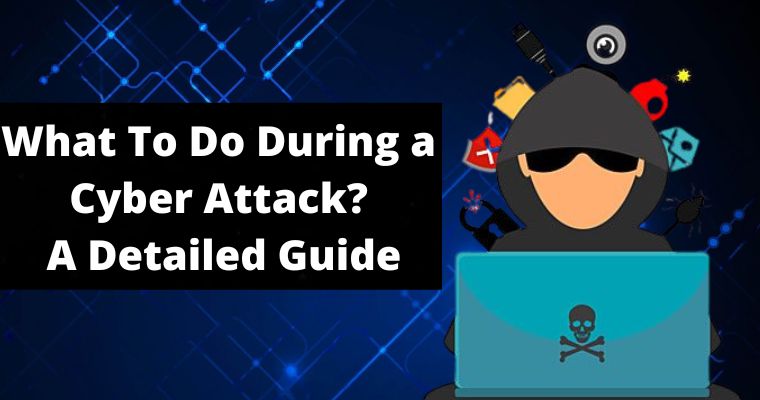In today’s modern era, everyone can become a victim of cyber attacks. Today, in this article, we are going to tell you that if you become a victim of a cyber attack, then what should you do in that situation?
Apart from this, we will also tell you how you can protect yourself and your business from such threats.
No business in this world is safe from the risk of data breaches or cyber-attack. No matter how big or small your industry is, if your data, significant documents, or client information is exposed, the penalty can be hard to recover from.
While organizations do plenty of things to avoid a cyber attack from happening, it has turned out to be clear that no organization is bulletproof. In fact, one of the big cyber safety trends throughout the past few years has been the acceptance of the eclipse breach model.
This model is based on the idea that it is impracticable to stop all security breaches, so the organization needs to take steps to reduce damage when a breach does occur (& to deal with the costs afterward).
There’s lots of information out there on what to do after an attack, but what must you do while the attack is in progress? In this piece of writing, we’ll discuss what you can do to mitigate the harm caused by a cyber attack incident by slowing or even stopping its progress.
Each cyber attack event is special, so there is no such thing as a checklist that is certain to thwart an attacker’s efforts.
But, there are a number of general things you can do to optimistically put a stop to the attack before the attacker can get access to some type of private information, credit card numbers, or additional high-value data.
Preparation for a cybersecurity emergency, in addition to crafting significant incident responses and recovery scenarios for different sorts of assaults, is the most significant thing a business can do for survival.
When it comes to recovering from a cyber assault, time is the key, & the most excellent formula for success is an organized & well-planned response.
Table of Contents
How Possible are Cyber Attacks and Data Breaches?
Cyberattacks and data breaches are unfortunately becoming increasingly common. In 2023 alone, there were over 42 million reported data breaches, exposing billions of records. This means that the chances of any individual or organization being targeted by a cyberattack are quite high.
There are a number of factors that contribute to the increasing prevalence of cyberattacks and data breaches. These include:
- The growing reliance on technology and the internet
- The increasing sophistication of cybercriminals
- The lack of adequate cybersecurity measures in many organizations
What to do in case of a Cyber Attack?
Falling victim to a cyber attack can be a stressful and confusing experience. However, taking quick and decisive action can help minimize the damage and expedite recovery. Here are the key steps to follow:
Contain the Attack
- Disconnect: Immediately disconnect affected devices from the internet and network to prevent further spread. This includes computers, laptops, mobile phones, and any other connected devices.
- Isolate: If possible, isolate infected devices from other systems to prevent the attack from spreading within your network.
- Power Down: If disconnecting is not possible, consider powering down affected devices as a last resort.
Assess the Situation
- Identify the Attack: Determine the type of attack you’ve experienced (e.g., malware, ransomware, phishing). This will help guide your response.
- Evaluate the Damage: Assess what data might be compromised and the potential impact on your systems and operations.
Take Remedial Actions
- Report the Attack: Report the incident to the relevant authorities, such as the FBI or your local law enforcement agency. This may be required by law depending on the nature of the attack and the affected data.
- Notify Affected Parties: Inform anyone whose data might be compromised, such as customers, employees, or partners. Be transparent about the incident and the steps you’re taking to address it.
- Clean and Restore: Remove malware or other malicious software from infected systems. Restore data from backups if necessary.
Prevent Future Attacks
- Update Software: Ensure all software and firmware are updated to the latest versions to patch vulnerabilities.
- Strengthen Security: Review and improve your cybersecurity measures, such as stärkare lösenord, two-factor authentication, and firewalls.
- Educate Users: Train your employees and users on cybersecurity best practices to raise awareness and prevent future attacks.
Here is another thing to consider during Cyber Attack
Confirm the Attack
Get in touch with your IT provider so that they can recognize whether information has sometimes been compromised. The problem may have to be faced due to minor server failure which is why it is very important to know about the attack or breach.
Know the Type of Attack
Whether it’s a Virus, Malware, Phishing Scam, Spyware, or Trojan, identifying what kind & location of cyber-attack will assist your cyber safety specialist(s) with repairing the breach quicker.
Contain the Cybersecurity Breach
The primary step you must take after a data breach is to decide which servers/ devices have been compromised & contain them as fast as possible to make sure that other servers or devices won’t also be infected.
Below are a few things you can do to attempt to Prevent Cyber Attack
- Call your internet service provider and ask them to refresh your MAC address.
- Turn Off remote access
- Retain and Update your firewall settings
- Check and Update your passwords
- set up any exceptional security updates or patches
Assess and repair the safety breach damage
It’s significant to review & repair any breach as fast as possible. You’ll have to find out the cause of the breach within your particular business so that you can avoid a similar kind of attack from happening again in the future.
Report the Attack
When the attack has been contained, it’s necessary to report the event to Action Fraud. If some data has been breached, then under GDPR businesses are compulsory to get in touch with the Information Commissioner’s Office (ICO).
Inform every Customer
Your clients need to be notified, particularly if the attack has impacted some customer data. Work with your PR group to decide what the most excellent way to commune this breach is.
Train your employees and create a business cyber safety plan
Learn from this practice by putting safety measures in place to reduce & limit some future cyber-attacks. Increasing worker awareness, sharing encrypted files & authenticating downloads will decrease the threat.
Here are the steps to recover from a cyber attack
It’s simple to throw your hands in the air & alarm after you experience a cyber attack. However before you resort to that, check out what these professionals had to state about the steps they took to recover what was lost.
Check what was lost
The main step that should be followed to avoid cyber attacks is the most important but it is the most ignored.
Occasionally it is uncontaminated laziness & other times companies don’t desire to face reality, but if you are the subject of a cyber attack you have to determine accurately what information was compromised.
The reason for this is as the information stolen openly determines what your next step is.
Think of it as one of those spider charts you see on a detective’s wall when they’re trying to pin down an assassin.
They’re trying to build a link with lines and pictures of natives. You need to make a parallel chart after a cyber attack. You begin with whatever was stolen & then make links & steps from that information.
If email addresses were compromised, your flow chart of next steps is going to look extremely different than if social security numbers were compromised.”
Stop the whole thing to find the virus
Some employers experienced a cyber attack & they spring into action straight away. The course of the act was to find the virus that somebody had downloaded from a phishing email.
Each computer was scanned & the internet was shut off all week to make sure the virus didn’t spread or some other nasty emails were sent.
Invest in good software
Preparation for cyber attacks should begin with an activist trying to find malware in the network and then taking steps to prevent its spread.
It’s unbelievably difficult to prevent employees from making mistakes, which is why organizations require security technologies that prevent Ransomware & spyware from spreading once the predictable happens.
How to Report Cyber Crimes
- If you find out you are the sufferer of a fraudulent incident:
- Contact your IT/security section, if you have one
- Instantly contact your monetary institution to request a recall of funds
- Get in touch with your company to report irregularities through payroll deposits
Immediately report any cyber attack to the Internet Crime Complaint Center (IC3). They’ll further perform with federal, state, local or international law enforcement.
Also, get in touch with your credit card agency. Inform them if you’re disputing illegal charges made by scammers on your card or if you suspect your card number was compromised.
If you or your company is the victim of a network interruption, data breach, or Ransomware attack, get in touch with your nearby FBI field office or report it at tips.fbi.gov.
You too can be a victim of identity theft as it has become one of the major threats. Visit IdentityTheft.gov to learn how to reduce your risk.
Conclusion
As network attacks turn out to be more sophisticated & simpler to perform, expect the number of attacks to continue to increase.
With that understanding, learning about the stages of an attack is important and must become a significant component of your defense strategy for attack management.
Perform ongoing tests & assessments of your systems & of the new technologies that are accessible in the marketplace.
Verify whether your business could advantage from an out-of-path performance for several of your detection tools, and consider evaluating the application of a hybrid solution to defend your organization throughout attacks that saturate the internet pipe.



